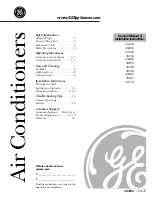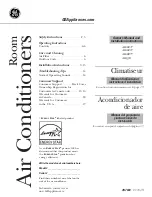
7 Configuration
Installer and user reference guide
38
RWEYQ8~1 RWEYQ8~14T9Y1B
VRV IV water-cooled system air conditioner
4P452191-1 – 2017.04
[1‑0]
Description
No indication
Undefined situation.
0
Outdoor unit is master unit.
1
Outdoor unit is slave 1 unit.
2
Outdoor unit is slave 2 unit.
[1‑1]
Shows the status of low noise operation.
Low noise operation reduces the sound generated by the unit
compared to nominal operating conditions.
[1‑1]
Description
0
Unit is currently not operating under low noise
restrictions.
1
Unit is currently operating under low noise
restrictions.
Low noise operation can be set in mode 2. There are two methods to
activate low noise operation of the outdoor unit system.
▪ The first method is to enable an automatic low noise operation
during night time by field setting. The unit will operate at the
selected low noise level during the selected time frames.
▪ The second method is to enable low noise operation based on an
external input. For this operation an optional accessory is
required.
[1‑2]
Shows the status of power consumption limitation operation.
Power consumption limitation reduces the power consumption of the
unit compared to nominal operating conditions.
[1‑2]
Description
0
Unit is currently not operating under power
consumption limitations.
1
Unit is currently operating under power
consumption limitation.
Power consumption limitation can be set in mode 2. There are two
methods to activate power consumption limitation of the outdoor unit
system.
▪ The first method is to enable a forced power consumption
limitation by field setting. The unit will always operate at the
selected power consumption limitation.
▪ The second method is to enable power consumption limitation
based on an external input. For this operation an optional
accessory is required.
[1‑5] [1‑6]
Shows:
▪ [1‑5]: The current T
e
target parameter position.
▪ [1‑6]: The current T
c
target parameter position.
[1‑13]
Shows the total number of connected outdoor units (in case of
multiple outdoor system).
It can be convenient to check if the total number of outdoor units
which are installed matches the total number of outdoor units which
are recognised by the system. In case there is a mismatch, it is
recommended to check the communication wiring path between
outdoor and outdoor units (Q1/Q2 communication line).
[1‑17] [1‑18] [1‑19]
Shows:
▪ [1‑17]: The latest malfunction code.
▪ [1‑18]: The 2nd last malfunction code.
▪ [1‑19]: The 3rd last malfunction code.
When the latest malfunction codes were reset by accident on an
indoor unit user interface, they can be checked again through this
monitoring settings.
For the content or reason behind the malfunction code see
"10.2 Solving problems based on error codes" on page 43
, where
most relevant malfunction codes are explained. Detailed information
about malfunction codes can be consulted in the service manual of
this unit.
7.2.8
Mode 2: Field settings
[2‑8]
T
e
target temperature during cooling operation.
[2‑8]
T
e
target (°C)
1
3°C
2 (default)
6°C
3
7°C
4
8°C
5
9°C
6
10°C
7
11°C
[2‑9]
T
c
target temperature during heating operation without variable
refrigerant temperature (VRT) control.
[2‑9]
T
c
target (°C)
1
41°C
2
42°C
3
43°C
4
44°C
5
45°C
6 (default)
46°C
7
49°C
[2‑12]
Enable the low noise function and/or power consumption limitation
via external control adaptor (DTA104A61/62).
If the system needs to be running under low noise operation or
under power consumption limitation conditions when an external
signal is sent to the unit, this setting should be changed. This setting
will only be effective when the optional external control adaptor
(DTA104A61/62) is installed.
[2‑12]
Description
0 (default)
Deactivated.
1
Activated.
[2‑20]
Manual additional refrigerant charge.
In order to add the additional refrigerant charge amount in a manual
way, following setting should be applied. Further instructions
regarding the different ways to charge additional refrigerant into your
system can be found in chapter
"6.7.2 About charging refrigerant" on
.
[2‑20]
Description
0 (default)
Deactivated.
















































